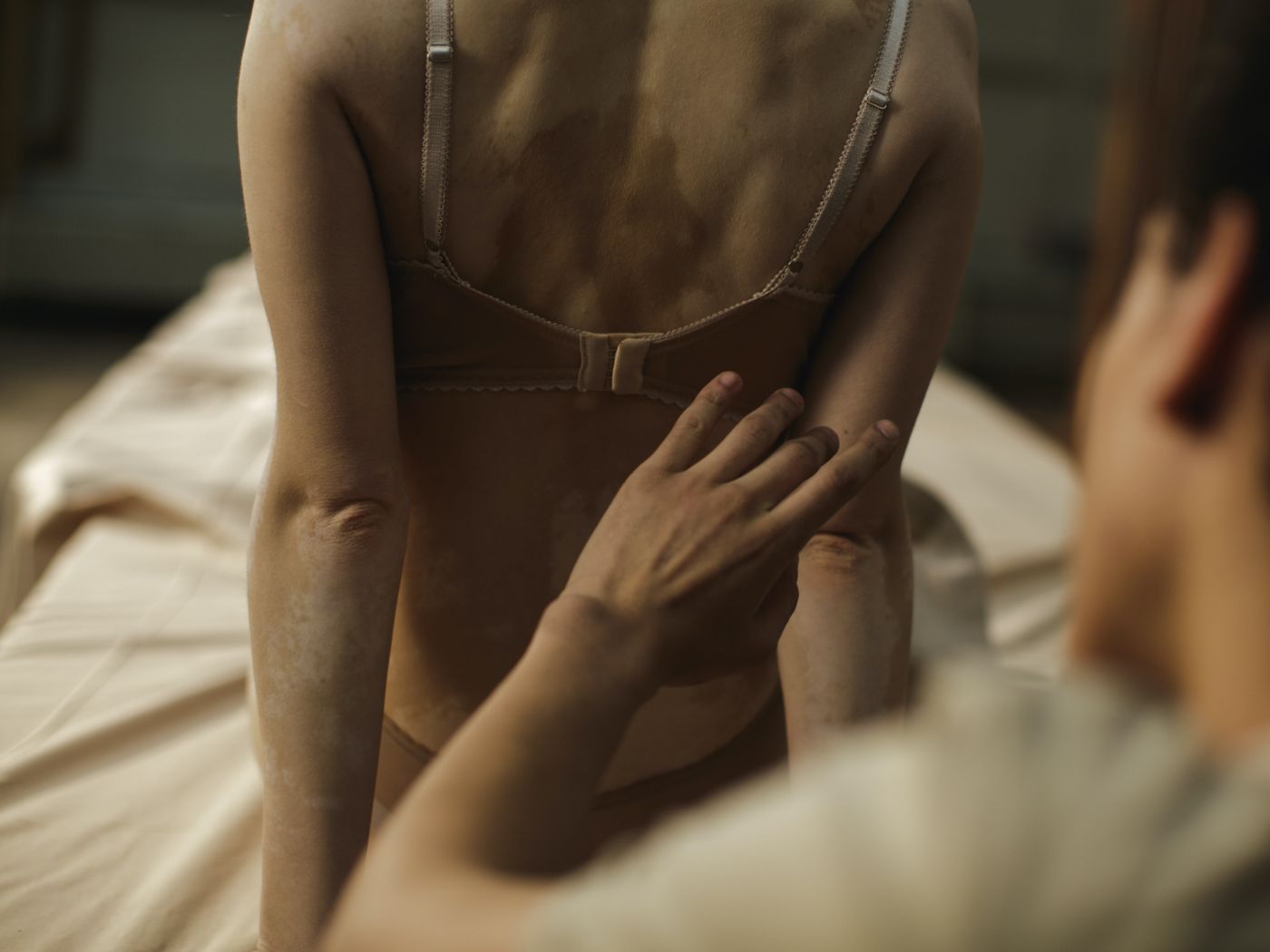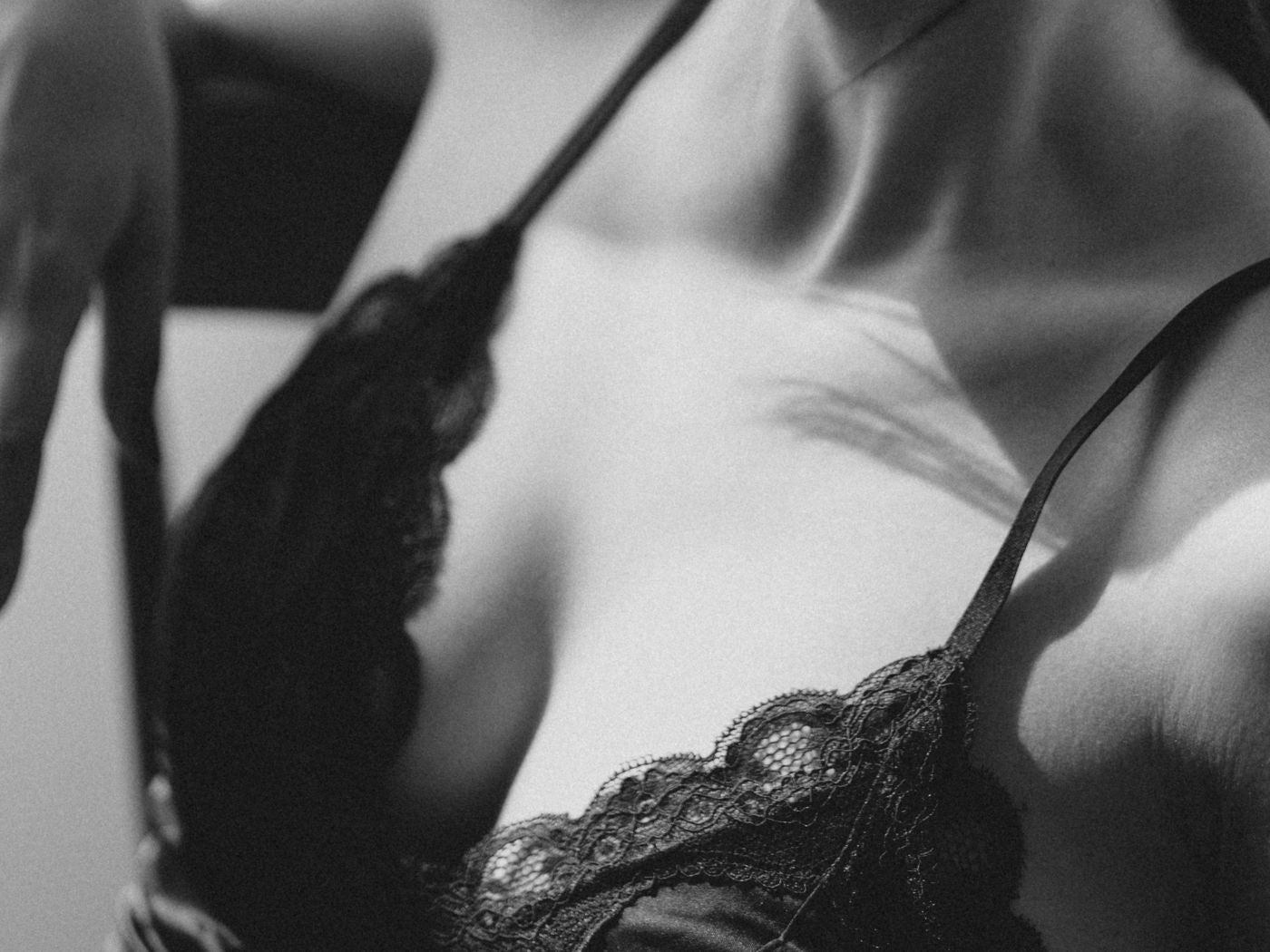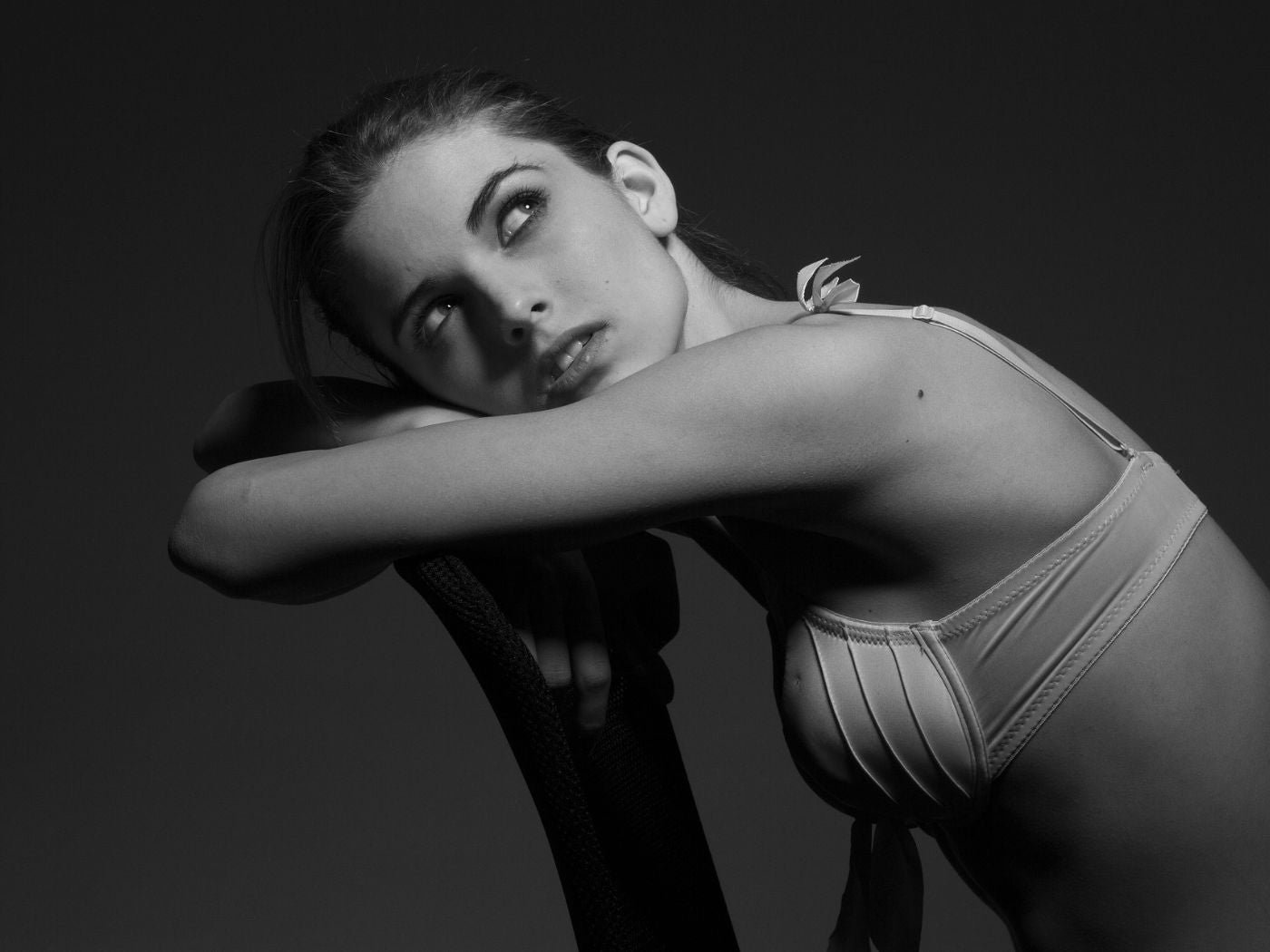If you're one of the women who removes her bra as soon as she enters the house, your bra is undoubtedly uncomfortable and poorly fitted. However, a bra shouldn't be so uncomfortable that it makes you not want to wear it. Without a doubt, no. A perfectly fitting bra should never be bothersome.
No matter how well-made your bra is, it will never fit or feel right if you wear the wrong size. The shoulders, bust, and back may hurt from wearing the wrong size. Put on a bra and examine yourself in the mirror to see if you're wearing the proper size.
Why Bra Fitting Matters?
Your health is the main factor, after all. Wearing the wrong size bra might cause several physical problems. For instance, if you don't support your bust, the tissue will stretch the skin beyond the point of no return, causing pain in your breasts and possibly even permanent skin marks.
In addition to being uncomfortable, wearing an excessively tight bra can seriously harm your skin, causing chaffing, skin abrasion, wounds, and blisters.
Your mental health may suffer as a result of an uncomfortable bra! If your breasts are not supported, it may have an impact on how you perceive yourself and how you feel on a daily basis.
By ensuring you have appropriate support while wearing a well-fitting bra, you may be able to delay the start of sagging.
How Should a Bra Fit?
It isn't easy to find the ideal fit. Different breast kinds require different forms of help in women. The type of bra needed depends on several factors, including the form and placement of the breasts in addition to their size.
Looking at the size of tables alone isn't always sufficient. The most crucial thing to keep in mind is that while a bra should offer support, it should never be uncomfortable or too tight.
There are a few crucial factors to take into account while buying a new bra.
How the Band Should Fit
Since it bears the majority of the weight and provides you with support, the band is crucial. Around your body, your band should be horizontal, parallel to your skin, and flat on it.
By looking at the hook and eye, you can tell if your band fits. When you first purchase your bra, you should be able to wear it on the loosest or middle setting. This makes it possible to tighten it when the band eventually extends.
How the Straps Should Fit
The straps' purpose is to guarantee a secure fit of the cup against the breast. They do not have the ability to lift the entire bust. They shouldn't dig in when you're wearing your bra, and you shouldn't have any trouble putting a finger between the strap and the shoulder.
How the Cups Should Fit
The cups must completely enclose the breast and rest flat on the skin without any gaps. If there is gaping, either your cup size is too large or the type of bra you are wearing doesn't fit your bust form well. The cup is probably too tiny if the bottoms of the cups are digging into the bust or if there is spillage over the top.
How the Underwire Should Fit
All of the breasts should be enclosed by the underwire, which should be placed below. You are wearing the incorrect size if the underwire rests directly on top of your breast tissue.
Verify that the underwire is not also touching the breast tissue under your arms. If one of your busts is larger than the other, the underwire needs to be adjusted to match the larger breast.
Common Situations of Bras that Don't Fit
Every woman has had bra fit issues that have led her to rip off her bra in frustration. We are all familiar with these issues in one way or another. The list of problems includes underwires that sting your skin and straps that fall off your shoulders, and the list goes on.
Back Band Riding Up
There is nothing worse than noticing your bra gently moving up your back. Up to 80% of the support for your breasts comes from a tight bra band. If it isn't secure, it will ultimately begin to climb up your back. This is due to the fact that your breasts' weight is pushing the back of the bra upward constantly until it resembles a necklace rather than a bra.
The band should be parallel to the ground and level with the front of the bra. You should be able to draw the band away from your body just far enough for a fist to fit between your back and the bra, but no farther.
Falling Straps
The first thing to check if you frequently experience strap slipping is whether your strap is indeed snug enough on your shoulder. Without being able to move the strap much further away from your fingers, two stacked fingers should fit comfortably between your shoulder and the strap. The bra band being too large is the main cause of a slipping strap.
Straps Digging In
Women whose shoulder grooves become deeply indented, producing swelling, pain, and redness. They are more likely to experience headaches and neck or shoulder nerve issues. If your band is too loose, the job will be done entirely by your straps.
Because your band isn't adequately supporting your breasts, their weight pulls down on the straps. Your shoulders are put under a lot of stress, which results in uncomfortable digging. Second, although tightening straps may temporarily provide lift and support, if they are too tight, they may start to dig in. The straps may also dig in if they are overly thin.
Quad Boob
The upper edge of the bra's cups biting into the breast tissue is what gives off the "quad boob" appearance. When a lady is wearing a bra that is too tiny in the cup for her, this occurs. Make sure your bra is the right size if you want to avoid this.
No flesh should protrude from the top of the cup, which should completely enclose your breast and give a seamless transition from the bra to the breast. The "quad boob" look can also be brought on by selecting the incorrect style for your breast type.
Wrinkled Cups
Wrinkling, puckering, or space in your bra's cups are the cause of this fit issue. If this is happening to you, the bra style may not be suitable for you, or the cup may be too large. Try a lower cup size to solve the problem of an excessively large cup. If the cups' wrinkling has disappeared in the smaller size.
Different styles are created to accommodate and enhance various body types. Try something that is made to flatter your distinct figure instead of trying to wear something that is not for you.
Side Boob
The term "side boob" refers to when extra flesh under the arm is visible due to your breast tissue bulging out the side of your bra. If either the band or the cup of your bra is too tiny, this bra fit issue will arise. Make sure you are wearing the proper size bra as a quick cure for this.
Pinching Underwire
Wearing the incorrect bra size is nearly invariably the cause of underwires that pinch. Of course, some designs expressly include a stiffer underwire for strength and a better fit. But when worn in the appropriate size, the majority of underwire bras can be comfortable.
Center Wires Not Sitting Flat
The bra is most likely not fitting properly and is at risk of being destroyed if the "gore," where the underwires connect (between your breasts), is sitting on or away from your body.
Because your breasts are pressing against the wires of your bra if the gore is not laying flat, this could be harming it. No one wants them to bend, break, or poke through at the ends, which enhances their likelihood of doing so.
Uneven Breast Size
The majority of women have one breast that is somewhat bigger than the other, which can make finding the right bra difficult. It could be difficult to locate bras that fit both sides quite well if there is a difference of more than one cup size. You should always fit your bras on the larger side to prevent pressure points and personal discomfort that could harm your bra.
Escapees
Breasts trying to flee are known as escapees! The majority of the time, they will try to slip under your bra band as a means of escape. This shouldn't have to be happening to you if you are wearing the proper size. The band or cup of your bra is either too big or too small, which is the most frequent cause of your breasts slipping under the band.
What Causes a Bra to Not Fit
Bra Loses Elasticity / Deforms
Even with moderate usage and care, all bras eventually lose their shape as a result of the degradation of the elastic fibers in the band and straps.
Bras are not replaced for a long time
If you did not replace your bra for a long time, then might be a chance that the bra does not fit you properly. While it's generally advised that a bra lasts between 6 and 9 months, we believe that with proper care, your bras should last much longer.
Always Use the Washing Machine to Wash the Bra
To wash your bra, always use a washing machine. Also, if it's possible, wash your bras in a small load of delicate laundry.
The Bra Size doesn't Fit
This is most likely a result of you purchasing a cup size that is either too small or large for you, which elevated the center panel away from your chest. It may also be a hint that this particular bra type does not fit your shape, thus it is important to try other styles in addition to different cup sizes.
Weight Loss / Weight Gain
Bra size can easily go up or down due to weight gain or loss. This may also be the reason why your bra doesn't fit.
Tips to Get the Perfectly Fitting Bra
Measure Size Correctly
It is recommended that you accurately measure your bra size. Using a measuring tape, stand straight up without a bra on, and measure around your back and under your bust, where the band of a bra would typically sit.
Ensure that the tape is moving in a smooth, even circle. It should be snug yet not oppressive. If you measure in inches and come up with an even number, it is the size of your band.
Related: How to Measure Your Bra Size?
Wear Bra Correctly
The transition from the bra to the décolletage should be seamless. The breast is not entirely covered by the cup. The side, bottom, or center of the breast tissue shouldn't be pressed against the underwire (or cup seam if you're wearing a non-wired bra). The cup should accommodate the entire breast.
Throw the Tired Old Bras
Eliminate all of the worn-out and old bras from your closet to make room for new ones.
Don't Use Washing Machine
A few bras cannot be machine washed, so first check the care label. Bras and undergarments with lace details and trims can tear and unravel if left unattended in the washing machine because of friction with other items in the load.
Choose a Bra with Wide Straps
By distributing the weight across a larger area, broad strap bras are beneficial. Additionally, wide-strap bras have extra padding, which provides a small amount of shoulder protection. They are also less likely to fall off the shoulders.
Conclusion:
You should feel fantastic and look even better in the ideal bra. It should feel like a second skin and not cause you to rush home to escape from it. Every woman should have a bra that fits her perfectly to enhance her bust and her confidence.



